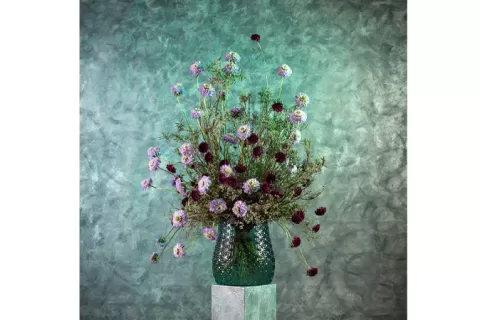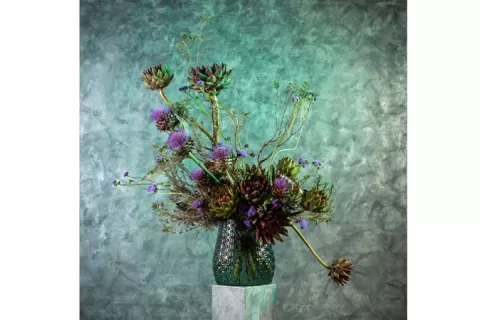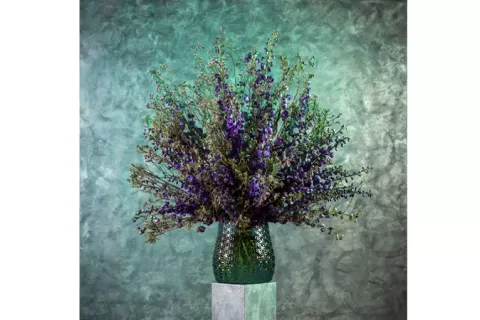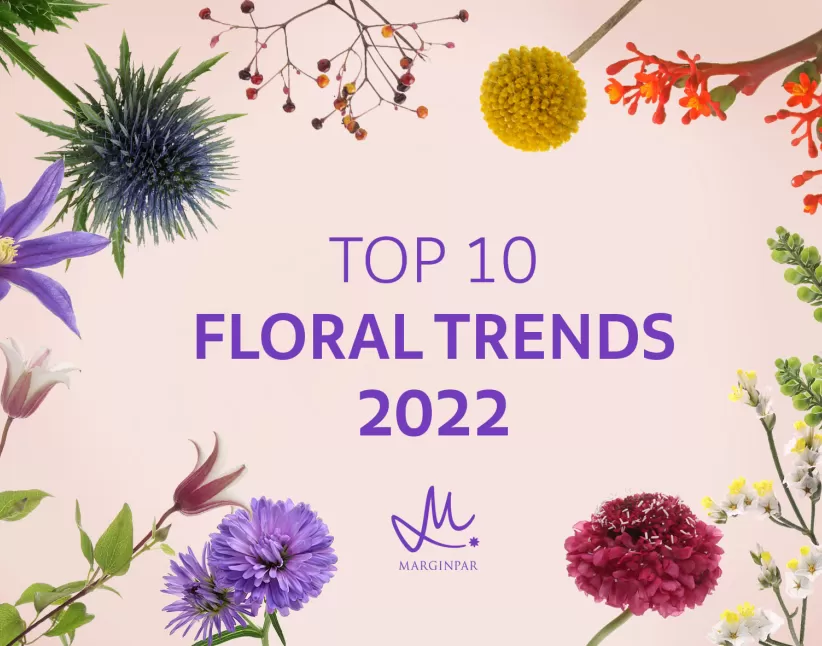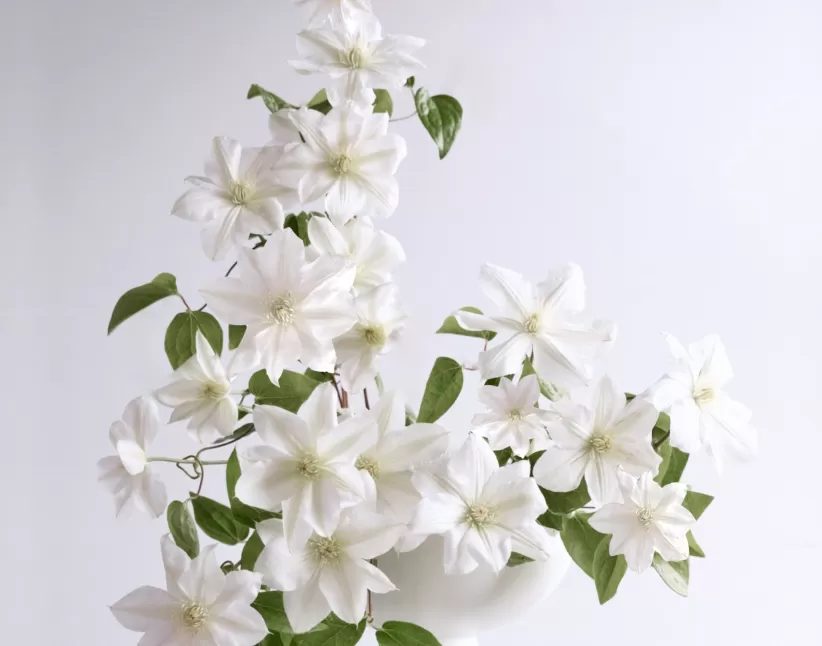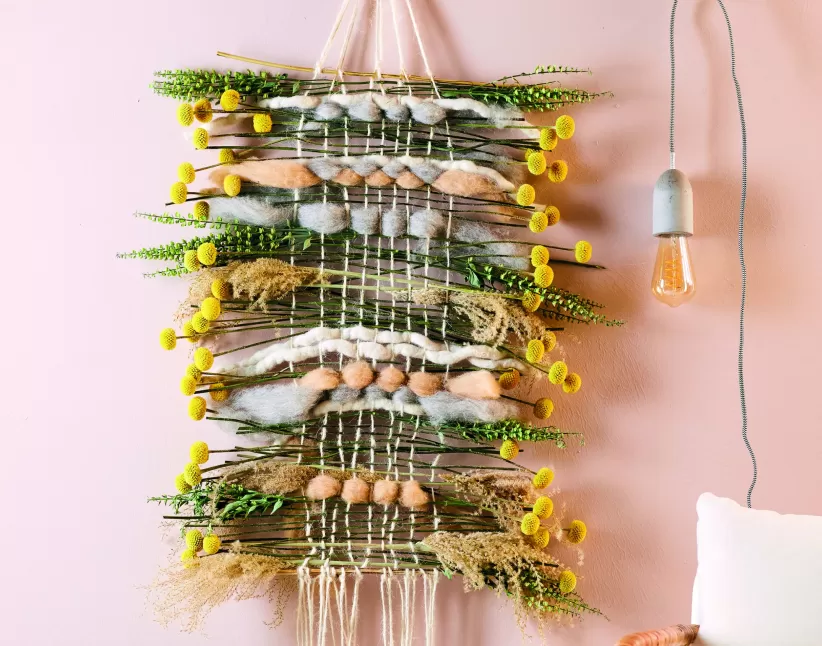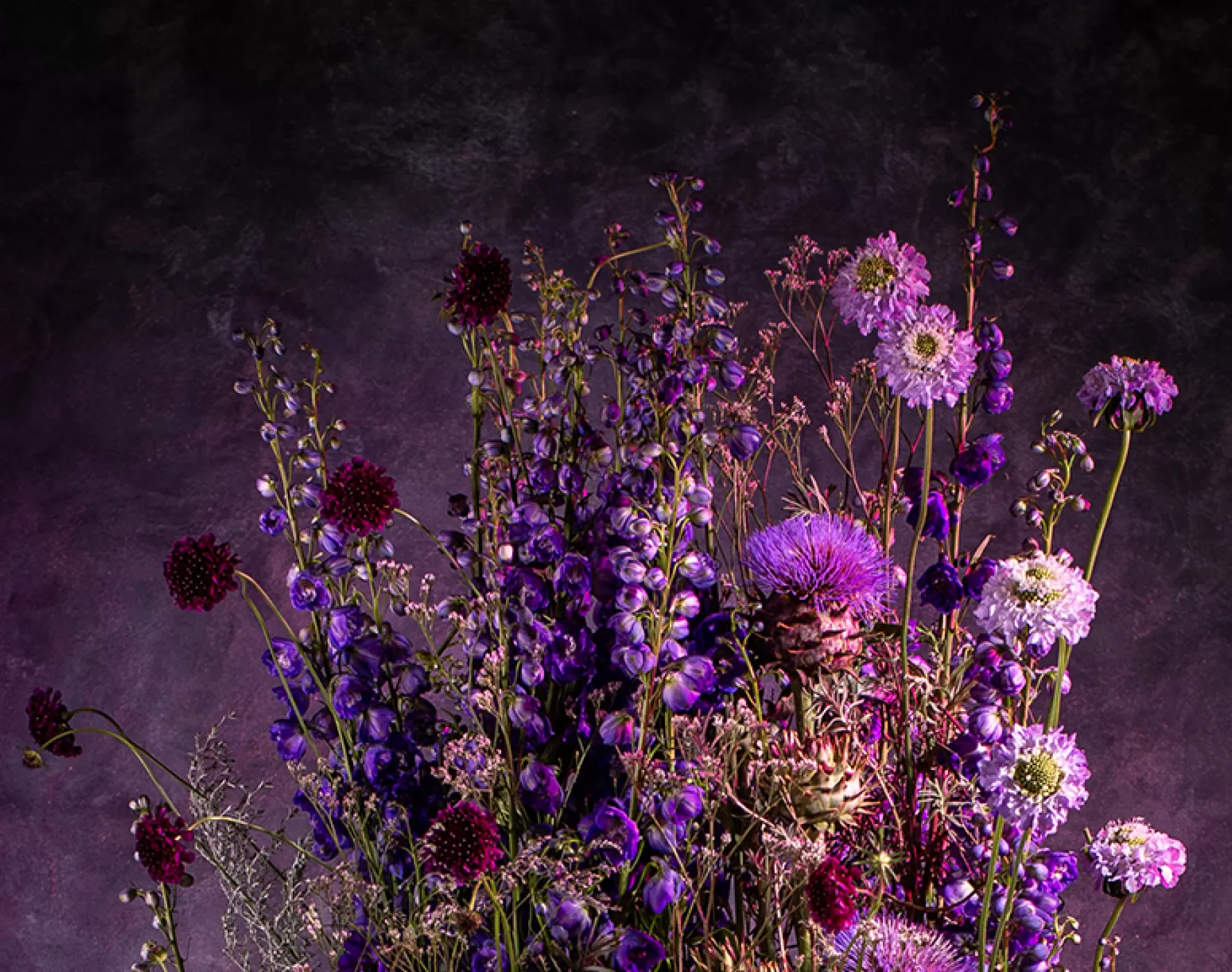
How to use Very Peri - trend colour of 2022 – in floral design
The do's and don'ts by Floral Fundamentals Ambassador Robert Bartolen
Back to storieshis year’s trend colour by Pantone is a gorgeous purple. The subtle shade radiates elegance and tenderness, and its great advantage is its suitability for all 4 seasons. Our floral friend Robert Bartolen did not waste any time and started designing with this colour straight away.
Combining colours
Robert: „In floral design, we were used to combining this type of colour with lighter shades, such as pale blue, pink, or white. But there is currently a demand for extravagance and courage. Therefore, my advice is to choose colours that make the Very Peri elements stand out. It works really well with dark colours, and also with completely different shades. With this contrast you create, your design will not change into a mass in which structures and accents disappear.“
The importance of structure
“When combining different flowers, it is very important to pay attention to their structure. Very Peri is a soft colour. For some flowers, it can
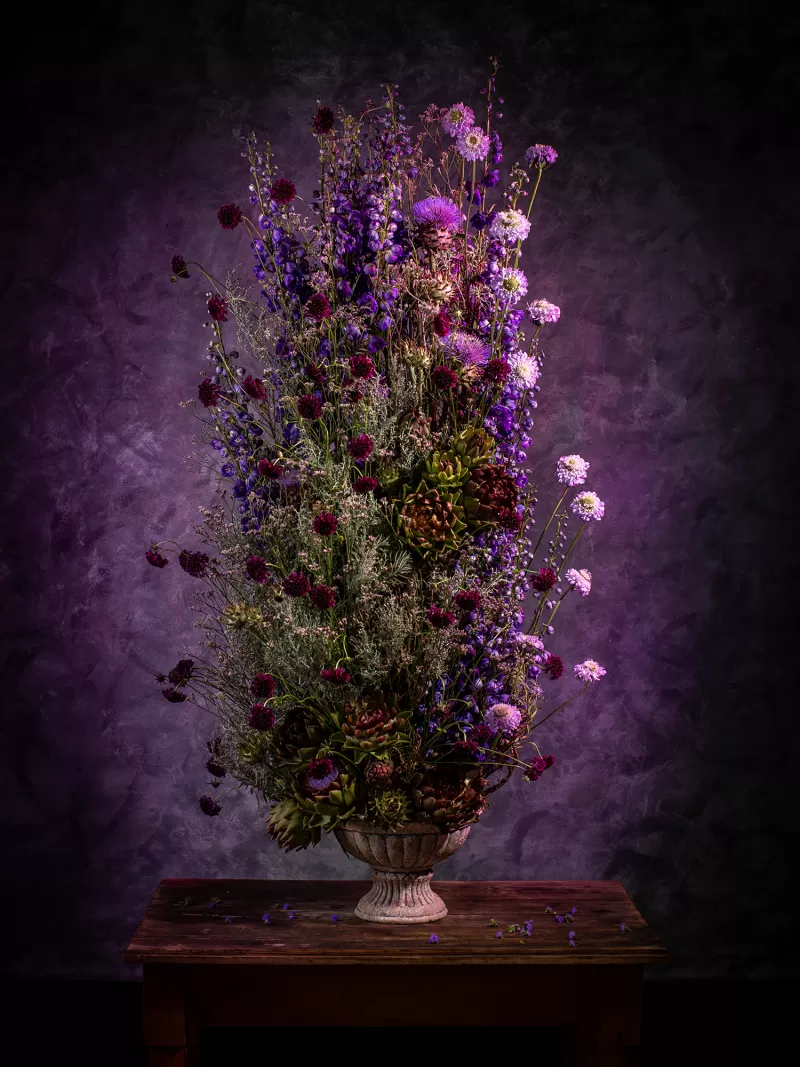
make them look artificial. However, with delicate flowers such as Clematis and Scabiosa, this colour makes them look fresh and natural. Flowers that bloom with inflorescence, like Lavender and Delphinium, are also at great risk to appear plastic when depth is not taken into account. The use of complementary greens can be very helpful in achieving that natural look.”
Complementary greenery
“Greens are extremely important for a Very Peri design. Think about grasses, delicate leaves, or even just the vase you use. Be careful with large and bold leaves, they may disrupt the proportionality of your design. In addition to actual greens, secondary flowers such as Limonium can be used to create space and allow for breathing. Very Peri comes out best in an airy design.”
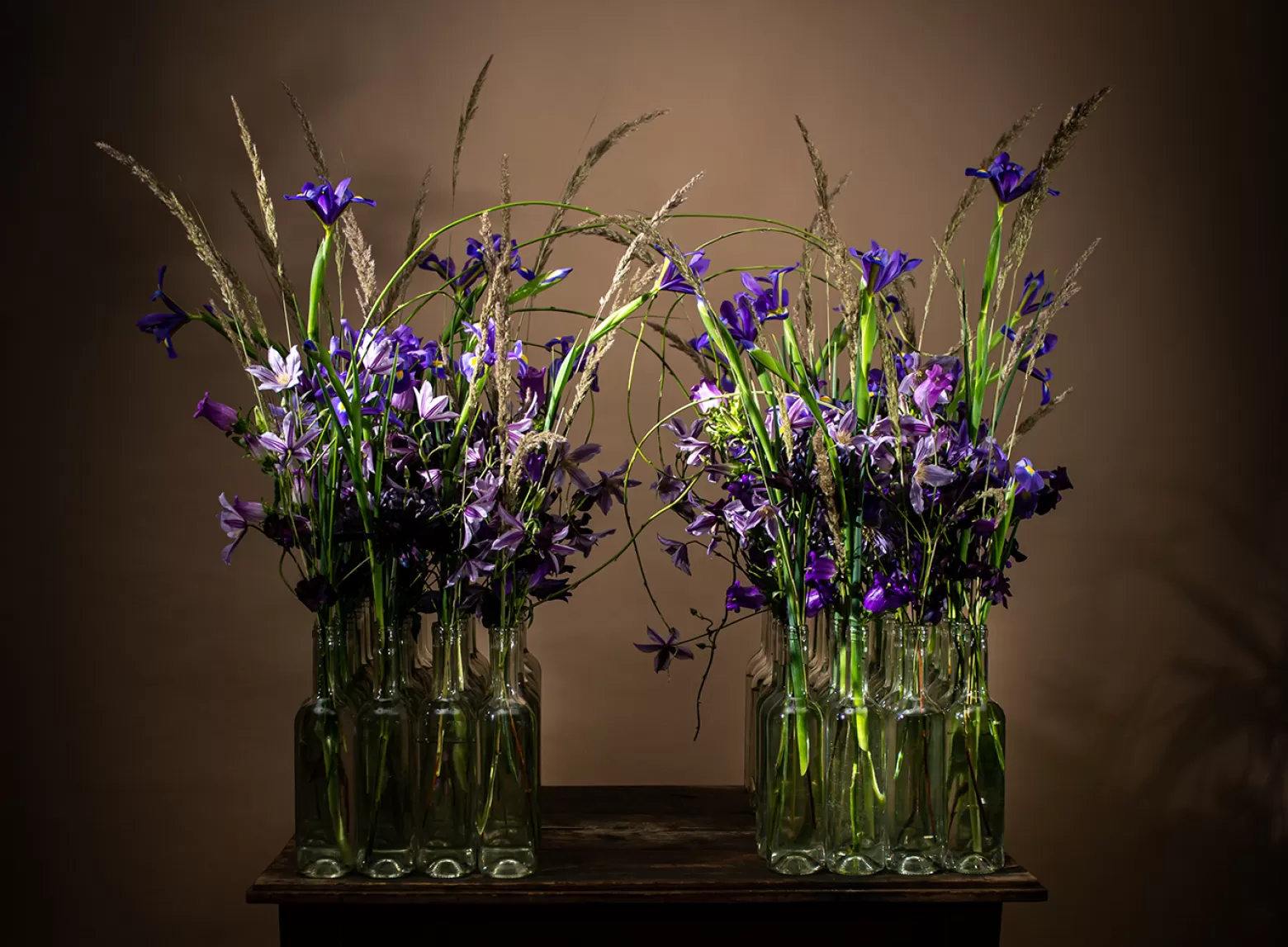
Style
“It is important to understand Very Peri. To let her live, so that she sings in the design. It should not be forgotten that this colour is elegant, playful, and fragile at the same time. Therefore, placement and confrontation with other elements is the key to success. Good choice of material, mix of structures and heights are crucial, so that it does not seem difficult or unnatural.”

